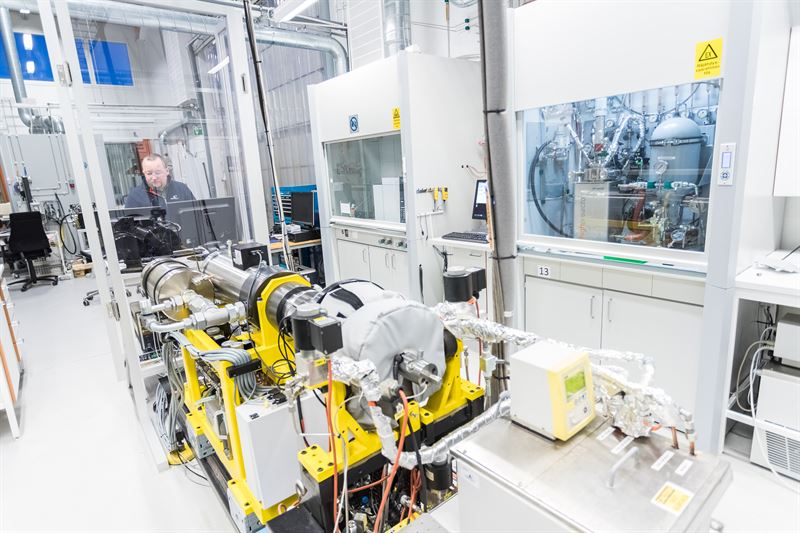Marine Sector Turns to Ammonia to Decarbonize Shipping
The shipping industry is charting a new route toward cutting fossil fuel use in ocean-going vessels: ammonia.
To date, no ammonia-fueled ships have been built, but that’s not stopping companies including Equinor, Man Energy Solutions and Wärtsilä from rushing to help bring ammonia-fueled ships to market.
Moves to adapt engines and ship designs to ammonia fuel are driven by a 2018 International Maritime Organization (IMO) commitment to cut international shipping’s annual greenhouse gas emissions by at least 50 percent by 2050, compared to 2008 levels.
“Making the target a reality means getting commercially viable deep-sea zero-emission vessels into operation by 2030,” said Katharine Palmer, global head of sustainability at Lloyd’s Register, the maritime classification society.
“Fully decarbonizing the shipping sector presents a significant challenge,” Palmer added. “It has the potential to be among the most disruptive transitions that shipping has had to deal with but also to provide significant opportunity for the sector.”
Moving away from fossil fuels in shipping will require different approaches according to the type of vessel involved, experts say. Commuter ferries such as those in operation in Washington state are already moving toward battery power.
Elsewhere, compressed or liquefied green hydrogen could be an option for ships that are able to refuel regularly. But for vessels that spend days or weeks at sea, such as tankers, super trawlers or cargo ships, the size of the fuel tanks needed for hydrogen would be prohibitive.
Another possibility is for the industry to rely on synthetic diesel or other carbon fuels produced using renewable energy. In this instance, though, the problem is cost.
Synthetic diesel would cost approximately twice as much as green hydrogen in terms of energy on a megajoule-per-megajoule basis, said Niels de Vries, lead naval architect at C-Job Naval Architects of the Netherlands.
Green ammonia’s manageable drawbacks
Green ammonia, which requires less storage volume than hydrogen and is cheaper to make than synthetic carbon fuels, seems like a handy compromise. But as a fuel, it is still far from ideal.
Although more energy-dense than hydrogen, ammonia still occupies significantly more space than diesel for the same amount of propulsion. New vessel designs might be able to accommodate this, but retrofitted ships could end up losing a fair amount of space in the hold.

Wärtsilä is already testing an ammonia engine. (Credit: Wärtsilä)
Ammonia is toxic, it could emit polluting nitrogen oxides throughout the fuel cycle and, as produced today, it’s still far from carbon-neutral. Nevertheless, proponents claim that none of these drawbacks is fatal to its prospects.
“We have experience already with burning all sorts of fuels and mixing them in all sorts of interesting ways,” said Peter Kirkeby, a technical promotion and support specialist at Germany’s Man Energy Solutions, which is developing a two-stroke vessel engine that can run on ammonia.
“Yes, it will be a challenge. But it’s also something we can solve.”
Ammonia engines on the way
Man Energy Solutions is expecting to have a two-stroke ammonia engine ready to deliver by early 2024, Kirkeby said. By the following year, the company aims to offer retrofit conversions to allow existing two-stroke engines to use ammonia.
Meanwhile, Wärtsilä is working on four-stroke engine designs, hoping to reach the stage of field tests as soon as 2022. And the Finnish marine-to-energy giant is developing ammonia storage and supply systems to install ammonia fuel cells on Eidesvik Offshore’s supply vessel Viking Energy by 2023, part of the EU project ShipFC.
After its conversion, Viking Energy is expected to become the first carbon-free ammonia-powered vessel in the world. Equinor will use it for supply operations on the Norwegian continental shelf to help cut its supply-chain emissions.
Viking Energy is likely a sign of things to come in the shipping industry, but experts acknowledge there are many challenges ahead, not least overhauling a global supply chain.
“Zero-carbon fuels are significantly more expensive than conventional fuels,” said Hege Rognø, manager for low-carbon technologies at Equinor. “For fuel producers to scale up production, a market needs to exist, but a market will not appear before the fuel is available.”
Further, “as shipping, to a large degree, is international, the legislation also needs to be adjusted and aligned internationally,” Rognø said. “What the IMO decides will be important for how quickly the shipping industry will decarbonize.”


